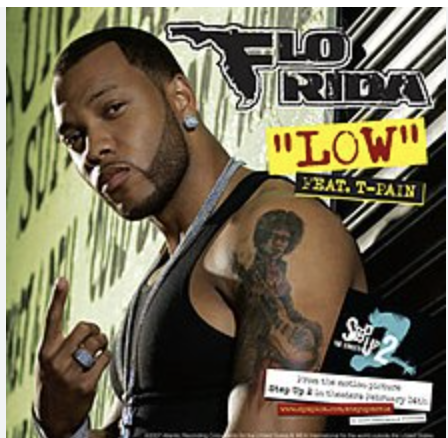Type 1 Diabetes and Hypoglycemia
1/29
Earn XP
Description and Tags
Y'all should've come to me and Thanvi's grand rounds I swear
Name | Mastery | Learn | Test | Matching | Spaced |
|---|
No study sessions yet.
30 Terms
Type 1 DM (T1DM)
An autoimmune disorder characterized by destruction of beta islet cells, leading to absolute insulin deficiency - typically onset in childhood
HLA-DR3, HLA-DR4, viral infections, dietary factors, stress, 1st degree relatives
Risk factors for T1DM
Random glucose, fasting glucose, HbA1c, C peptide, GADA, IAA, IA-2A, ZnT8A
16 y/o female patient presents with polydipsia and polyuria. She notes that in the last 3 months she has lost 20 pounds without trying. She is currently taking clotrimazole for a yeast infection. She reports blurry vision as well. What labs do you want?
finger stick glucose, CMP, CBC, VBG/ABG
14 y/o patient presents to the ER for N/V and abdominal pain. She is A&Ox2. Her mother reports that she has been super thirsty the last couple days and very tired. On a physical exam you note bilateral UE weakness, a fruity odor, and Kussmaul’s respirations. What do you want to order?
elderly, comorbid patients, children, adolescents, mild/early DKA
Who might have asymptomatic presentations of T1DM?
GADA, IAA, IA-2A, ZnT8A, ICA
What are some autoantibodies for T1DM?
C peptide (directly associated with insulin), autoantibodies (confirms autoimmune destruction)
What can you use to differentiate T1DM and T2DM?
fasting 126+, Random 200+ and symptoms, HbA1c 6.5%+
Diagnostic criteria for DM
maintain euglycemia to prevent acute and chronic complications
Management goals for T1DM?
Fasting 80-130, Post-prandial less than 180, HbA1c less than 7% (adjust for age, pregnancy, comorbidities)
Blood glucose targets for T1DM
Basal (long acting - glargine, detemir), Bolus (rapid acting - lispro, aspart), insulin pump (continuous subcutaneous insulin infusion)
What are the 3 types of insulin therapy?
Basal
Which insulin therapy provides steady glucose control between meals and overnight and is designed to mimic the body’s natural baseline insulin?
bolus insulin
Which insulin therapy address the post-prandial glucose spikes and provides a rapid, short-term insulin boost to counteract glucose surge?
self-monitoring of blood glucose (SMBG), Continuous glucose monitoring (CGM), artificial pancreas system (hybrid closed-loop systems)
What are some ways to monitor glucose
See every 3 months, review blood glucose levels and A1c
Follow up plan for young patients with T1DM
ensure the family/patient is equipped to handle hypoglycemia (glucagon), watch for weight gain due to insulin
Patient education measures for T1DM
DKA, hypoglycemia
Acute complications of T1DM
retinopathy, neuropathy, nephropathy, CVD (macrovascular)
Chronic complications for T1DM
IV fluids (hella), insulin infusion (add dextrose after blood glucose drops below 300 to avoid a crash), monitor potassium and treat accordingly
14 y/o patient presents to the ER for N/V and abdominal pain. She is A&Ox2. Her mother reports that she has been super thirsty the last couple days and very tired. On a physical exam you note bilateral UE weakness, a fruity odor, and Kussmaul’s respirations. Labs show a blood glucose 759, bicarb is 17, arterial pH is 7.26, serum osmolality is 340, ketonemia, elevated BUN and creat. What is your treatment plan?
challenges in management due to growth/lifestyle (peds), tight glycemic control reduces risk in pregnancy, Importance of addressing diabetes distress (psychosocial)
Special considerations for T1DM
hypoglycemia
A medical emergency that occurs when the blood glucose drops under 70 that requires timely recognition and management

tremors, palpitations, sweating, anxiety
Neurogenic symptoms of hypoglycemia
Confusion, dizziness, blurred vision, seizure, LOC
Neuroglycopenic symptoms for hypoglycemia
diabetes (insulin, sulfonylureas), prolonged fasting, EtOH, adrenal insufficiency
Risk factors for hypoglycemia
Symptoms of hypoglycemia, Low plasma glucose, resolution of symptoms with glucose administrations
What is included in Whipple’s triad?
glucose (CMP), insulin, c-peptide, beta-hydroxybutyrate (should be low), sulfonylurea screen
Labs for hypoglycemia
exogenous insulin use, sulgonylurea-induced hypoglycemia, insulinoma, adrenal insufficiency, critical illness
DDx for hypoglycemia
IV dextrose (D50 pressure bag, followed by D5W), IM glucagon
Patient presents to the ER for AMS. EMS reports that the patient was found unresponsive and diaphoretic on the River Walk. Vitals in the field were as followed - 124/76, 87 bpm, 16 RR, 40 glucose finger stick, 98.7 temperature, satting 96% on RA. Labs are as follows CMP glucose 40, insulin 18 (elevated), C-peptide elevated. What is your treatment plan?
Oral glucose, recheck sugar in 15 min
If a patient is alert and hypoglyemic what can you do?
stop sulfonylurea, consider octroetide if recurrent or prolonged, adjust diabetes management plan
Addressing the underlying in hypoglycemia